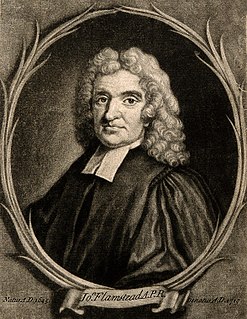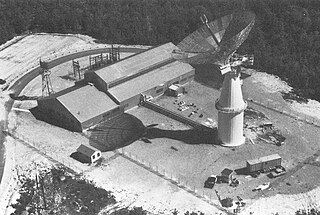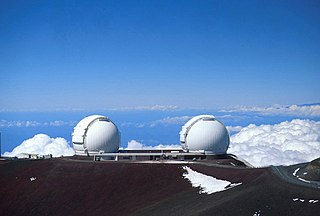
An astronomer is a scientist in the field of astronomy who focuses their studies on a specific question or field outside the scope of Earth. They observe astronomical objects such as stars, planets, moons, comets and galaxies – in either observational or theoretical astronomy. Examples of topics or fields astronomers study include planetary science, solar astronomy, the origin or evolution of stars, or the formation of galaxies. Related but distinct subjects like physical cosmology, which studies the Universe as a whole.
Astronomy is the oldest of the natural sciences, dating back to antiquity, with its origins in the religious, mythological, cosmological, calendrical, and astrological beliefs and practices of prehistory: vestiges of these are still found in astrology, a discipline long interwoven with public and governmental astronomy. It was not completely separated in Europe during the Copernican Revolution starting in 1543. In some cultures, astronomical data was used for astrological prognostication. The study of astronomy has received financial and social support from many institutions, especially the Church, which was its largest source of support between the 12th century to the Enlightenment.

John Flamsteed FRS was an English astronomer and the first Astronomer Royal. His main achievements were the preparation of a 3,000-star catalogue, Catalogus Britannicus, and a star atlas called Atlas Coelestis, both published posthumously. He also made the first recorded observations of Uranus, although he mistakenly catalogued it as a star, and he laid the foundation stone for the Royal Greenwich Observatory.

Astronomy is a natural science that studies celestial objects and phenomena. It uses mathematics, physics, and chemistry in order to explain their origin and evolution. Objects of interest include planets, moons, stars, nebulae, galaxies, and comets. Relevant phenomena include supernova explosions, gamma ray bursts, quasars, blazars, pulsars, and cosmic microwave background radiation. More generally, astronomy studies everything that originates beyond Earth's atmosphere. Cosmology is a branch of astronomy that studies the universe as a whole.

Radar astronomy is a technique of observing nearby astronomical objects by reflecting microwaves off target objects and analyzing the reflections. This research has been conducted for six decades. Radar astronomy differs from radio astronomy in that the latter is a passive observation and the former an active one. Radar systems have been used for a wide range of solar system studies. The radar transmission may either be pulsed or continuous.

A celestial event is an astronomical phenomenon of interest that involves one or more celestial objects. Some examples of celestial events are the cyclical phases of the Moon, solar and lunar eclipses, transits and occultations, planetary oppositions and conjunctions, meteor showers, and comet flybys, solstices and equinoxes.

There are 79 known moons of Jupiter, not counting a number of moonlets likely shed from the inner moons, and S/2003 J 24. The most massive of the moons are the four Galilean moons, which were independently discovered in 1610 by Galileo Galilei and Simon Marius and were the first objects found to orbit a body that was neither Earth nor the Sun. Much more recently, beginning in 1892, dozens of far smaller Jovian moons have been detected and have received the names of lovers or daughters of the Roman god Jupiter or his Greek equivalent Zeus. The Galilean moons are by far the largest and most massive objects to orbit Jupiter, with the remaining 75 known moons and the rings together composing just 0.003% of the total orbiting mass.

Charles Dillon Perrine was an American astronomer at the Lick Observatory in California (1893-1909) who moved to Cordoba, Argentina to accept the position of Director of the Argentine National Observatory (1909-1936). The Cordoba Observatory under Perrine's direction made the first attempts to prove Einstein's theory of relativity by astronomical observation of the deflection of starlight near the Sun during the solar eclipse of October 10, 1912 in Cristina (Brazil), and the solar eclipse of August 21, 1914 at Feodosia, Crimea, Russian Empire. Rain in 1912 and clouds in 1914 prevented results.
The Astronomical Society of the Pacific (ASP) is an American scientific and educational organization, founded in San Francisco on February 7, 1889. Its name derives from its origins on the Pacific Coast, but today it has members all over the country and the world. It has the legal status of a nonprofit organization.
The Astronomical Society of Southern Africa (ASSA), formed in 1922, is a widespread body consisting of both amateur and professional astronomers. There are eight autonomous centres throughout Southern Africa.
Solar physics is the branch of astrophysics that specializes in the study of the Sun. It deals with detailed measurements that are possible only for our closest star. It intersects with many disciplines of pure physics, astrophysics, and computer science, including fluid dynamics, plasma physics including magnetohydrodynamics, seismology, particle physics, atomic physics, nuclear physics, stellar evolution, space physics, spectroscopy, radiative transfer, applied optics, signal processing, computer vision, computational physics, stellar physics and solar astronomy.

The following outline is provided as an overview of and topical guide to astronomy:

The International Year of Astronomy (IYA2009) was a year-long celebration of astronomy that took place in 2009 to coincide with the 400th anniversary of the first recorded astronomical observations with a telescope by Galileo Galilei and the publication of Johannes Kepler's Astronomia nova in the 17th century. The Year was declared by the 62nd General Assembly of the United Nations. A global scheme, laid out by the International Astronomical Union (IAU), was also endorsed by UNESCO, the UN body responsible for educational, scientific, and cultural matters.
MUL.APIN is the conventional title given to a Babylonian compendium that deals with many diverse aspects of Babylonian astronomy and astrology. It is in the tradition of earlier star catalogues, the so-called Three Stars Each lists, but represents an expanded version based on more accurate observation, likely compiled around 1000 BCE. The text lists the names of 66 stars and constellations and further gives a number of indications, such as rising, setting and culmination dates, that help to map out the basic structure of the Babylonian star map.

The StarPeace Project was a global special project first organised in conjunction with the International Year of Astronomy in 2009. StarPeace project participants held public star parties near a border of their country with a neighboring country. The intention was to show that there are no borders in the real Earth, borders are man-made and science has no borders.
Khagol Vishwa (KV) is an organization for amateur astronomers working in Maharashtra, India. It was established on 17 November 1999. The main activity of KV is to conduct observations of astronomical events, like meteor showers, eclipses, occultation, variable stars and generate scientific data for amateur research. Along with scientific studies, KV is also active in science popularization. Some of the major activities conducted by KV are public star gazing programs, sky at your doorstep, certificate course in amateur astronomy, and science exhibition.

Hermann B. W. Mucke was an Austrian astronomer and one of the most significant promoters of amateur astronomy in German-speaking Europe. He was born and died in Vienna.

Galileo di Vincenzo Bonaiuti de' Galilei was an Italian astronomer, physicist and engineer, sometimes described as a polymath, from Pisa. Galileo has been called the "father of observational astronomy", the "father of modern physics", the "father of the scientific method", and the "father of modern science".
National Astronomy Week (NAW) is an event held every few years in the United Kingdom to promote public awareness of astronomy by celebrating notable astronomical events. The last NAW, Mars Encounter, was run during the week of 14–22 November 2020.











